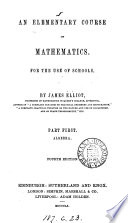 | James Elliot - 1860 - 252 pages
...so on. THEOREM VIII. If any Number of Quantities are Proportionals, as any one of the Antecedents is to its Consequent, so is the Sum of all the Antecedents to the Sum of all the Consequents. Thus, if a : p : : b : q : : c : r, then a : p : : a + b + c : p +... | |
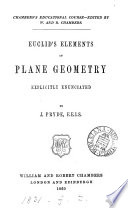 | Euclides - 1860 - 288 pages
...PROPOSITION XII. THEOREM. If any number of magnitudes be proportionals, as one of the antecedents is to its consequent, so is the sum of all the antecedents to that of the consequents. Given A : B : : C : D, and C : D : : E : F ; to prove that A:B::A+C + E:B... | |
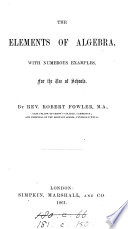 | Robert Fowler - 1861 - 426 pages
...I : : m : t. xi. When any number of magnitudes are proportionals, as any one of the antecedents is to its consequent, so is the sum of all the antecedents to the sum of all the consequents. Let a : Ъ : : с : d : : e : f, Then shall о : Ъ : : a + с + e... | |
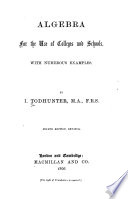 | Isaac Todhunter - Algebra - 1866 - 618 pages
...a— b :: с + d : c — d. 397. When any number of quantities are proportionals, as one antecedent is to its consequent, so is the sum of all the antecedents to the sum of all the consequents. Let a : b :: с : d :: e : f; then a : b :: a + с +e : b + d +f. For... | |
 | James Pryde - Navigation - 1867 - 506 pages
...42. THEOREM. — If there be any number of quantities which are proportional, as one antecedent is to its consequent, so is the sum of all the antecedents to the sum of all the consequents. _,. ace , a a+ с +е Given ъ = -d=j; to prove that y = T . a ce Then... | |
 | Thomas Kimber - 1874 - 352 pages
...proportionals ? Prove that if any number of quantities be in continued proportion, as one of the antecedents is to its consequent so is the sum of all the antecedents to the sum of all the consequents. 9. Prove the rule for finding the sum to и terms of an arithmetic... | |
 | 1877 - 188 pages
...proportionals ? Prove that if any number of quantities be in continued proportion, as one of the antecedents is to its consequent so is the sum of all the antecedents to the sum of all the consequents. 9. Prove the rule for finding the sum to n terms of an arithmetic series... | |
 | London univ, exam. papers - 1878 - 164 pages
...proportionals? Prove that if any number of quantities be in continued proportion, as one of the antecedents is to its consequent so is the sum of all the antecedents to the sum of all the consequents. 9. Prove the rule for finding the sum to n terms of an arithmetic series... | |
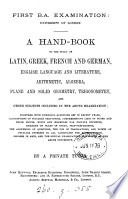 | J. G - 1878 - 408 pages
...ma±nb:pa±qb : : mc±nd :pc±qd. 7. When any number of quantities are proportionals, as one antecedent is to its consequent, so is the sum of all the antecedents to the sum of ail the consequents. 8. We will now exemplify a process somewhat different to the one usually... | |
 | Robert Potts - Algebra - 1879 - 672 pages
...quantities are proportionalt, ai any antecedent it to its consequent, so is the sum of all the antecedente to all the consequents. (Eue. VII. 12.) Suppose these...d, .-. ad= be, and a : b :«:/,.-. af- be, and ab = ba. By addition, ab+ad-r-af-ba+bc+be, . д_ а+с+в 'Ь-b+d+f' and a : Ъ : : а+с+е : b+d+f.... | |
| |